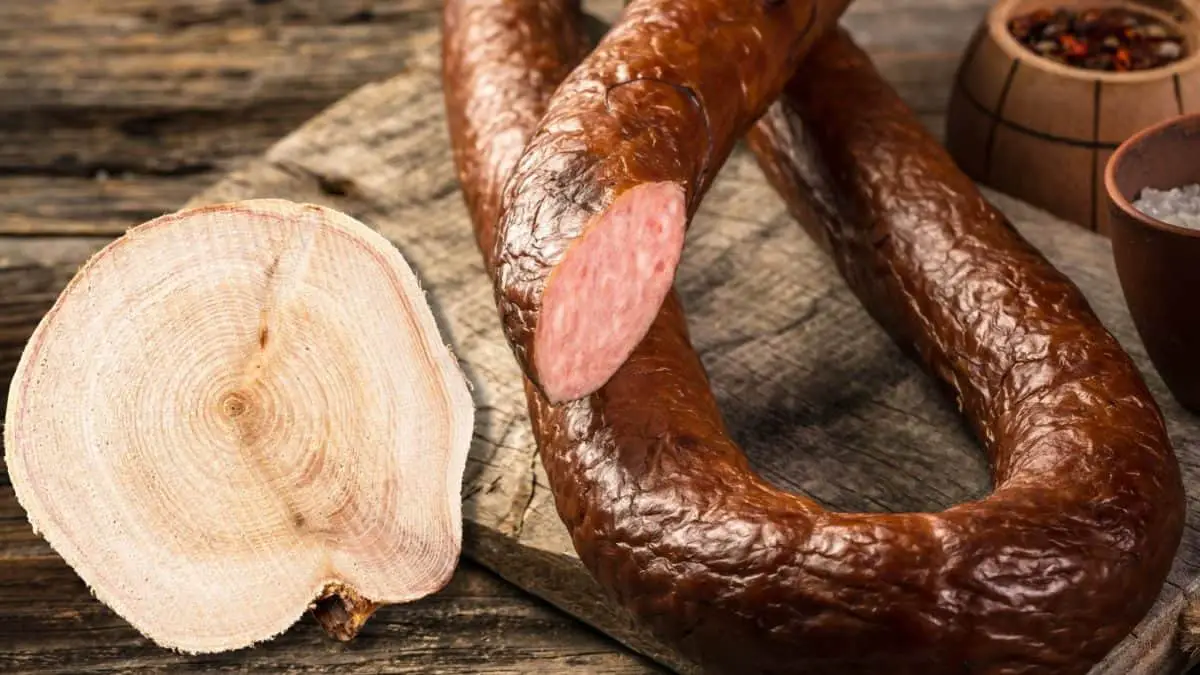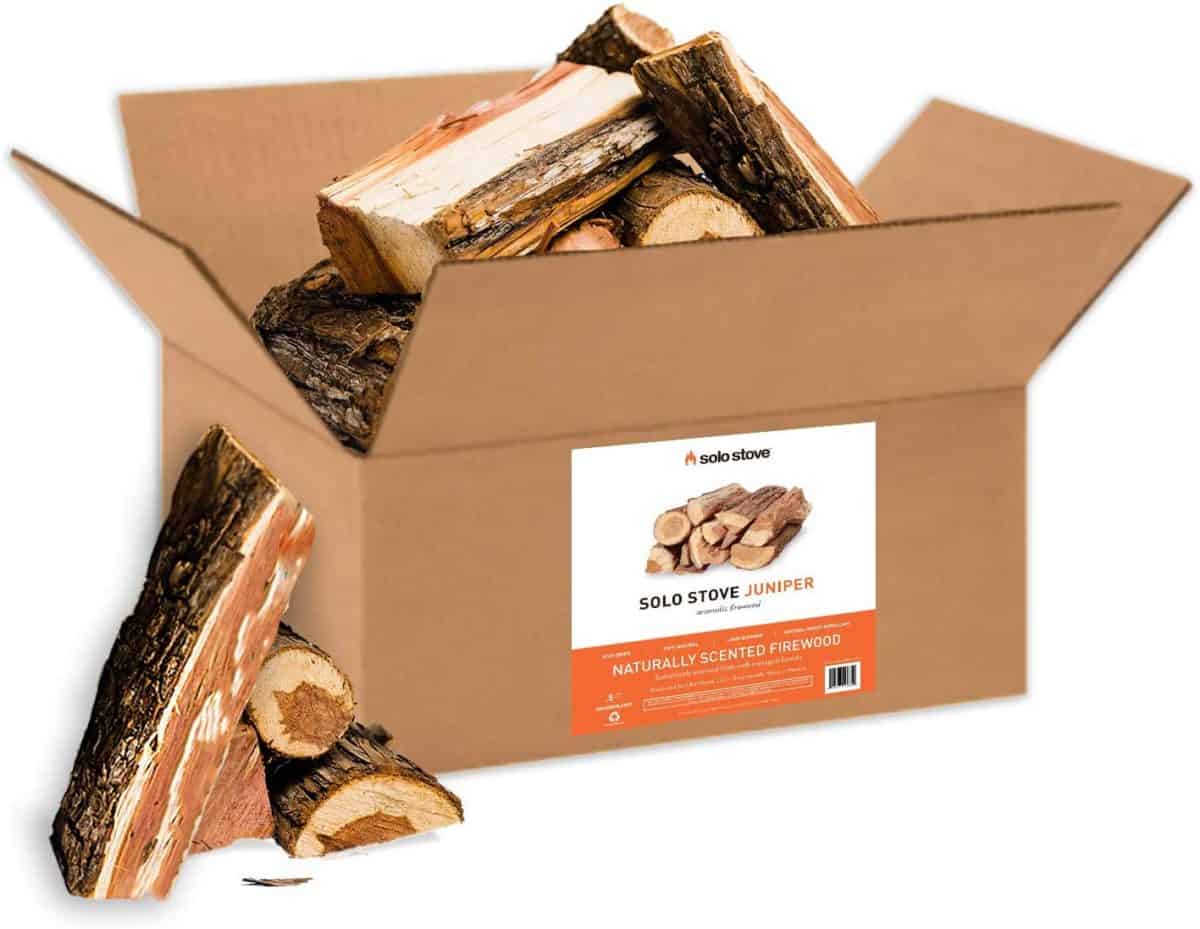Ask any seasoned smoker, and they’ll warn you: DO NOT smoke with softwoods. They burn quickly and produce a lot of resin and smoke, often leaving food with a funny taste. So being a softwood, can you smoke with juniper?
You can smoke with juniper wood, and it’s great for meats like bacon and pork belly or vegetables such as squash and mushrooms. You can use logs as well as chunks. But as a softwood, it will burn quickly and you need to make sure it’s dry and well-seasoned.
Provided you know what you’re doing, of course. Let’s get into that!

Juniper wood gives food a dense smoke flavor, with a balsamic wood scent. This is thanks to the high oil content within the berries, leaves, and bark.
Commonly found in the gardens of many homes in North America, Europe, and West Asia, juniper is easy to find. Under the right circumstances, it can be equally easy to smoke with. And is a pretty popular, inexpensive choice for many wishing to smoke their foods, too.
There aren’t that many options to buy it online, most small chips are for adding to your gin. But these juniper logs are great for longer smoking session:

But what is the best way to smoke with juniper? Moreover, what foods compliment junipers’ unique flavors best?
Many different types of meat and vegetables smoke well with juniper. But like with any wood, there are some considerations you’ll need to bear in mind, to avoid ruining your dish.
Luckily, we’ve tried and tested some of the best, and how to smoke them with juniper. So you can achieve the best results for your next smoke session.
In this post we'll cover:
What foods can I smoke using juniper wood?
Juniper wood’s dense-smoke flavor makes it a versatile wood, complimenting a wide variety of meats and veg.
In particular, this commonly-grown wood goes very well with fattier cuts of meat. In places such as Scandinavia, juniper wood is a popular choice for smoking meats like bacon. I definitely recommend it if you haven’t tasted it already!
What meats and fish should I smoke with juniper?
Juniper wood smokes well with:
- Bacon
- Pork belly
- Ribs
- Cod
- Salmon
- Venison
- Steak (pork and beef)
- Sausages (Make sure they’re made from high-quality meat for best results)
You can also try incorporating a good garlic and pepper rub for your meat, and marinating overnight in the fridge for maximum flavor.
For more tantalizing meat recipe ideas, check out the best ten recipes out there.
What veg is best for juniper wood?
During your next grill juniper wood smoke-session, you’ll want to include the following vegetables:
- Summer squash
- Portobello mushrooms
- Potatoes
- Sweet potatoes
- Bell Peppers
- Onion
- Garlic
These go down particularly well with the meats above or enjoy them alone if you’re meat-free.
For more vegetable smoking recipe ideas, read our blog on the 7 best recipes for smoking vegetables.
What woods burn well with juniper?
Many pitmasters enjoy using a mix of hickory wood when smoking with juniper. You can also try mixing it with other hardwoods like maple and oak.
What should I consider when smoking with juniper wood?
Smoking with juniper is relatively similar to smoking with most other woods. Many pitmasters around the world love it thanks to its versatility, availability, and unique flavor.
As it is a softwood, there are some key factors to be mindful of.
Wet or dry juniper wood?
You may have heard of some pitmasters using wet wood to smoke their food. When it comes to smoking with juniper, you’ll want to avoid this.
Wet juniper wood produces a gray, dirty, thick smoke. And a lot of it.
It also takes longer to light, and longer to burn.
Similarly, using juniper wood that’s not well seasoned will give you less than desirable results. This can result in your dish being covered in resin, leaving an unpleasant, bitter taste.
To avoid this, only use well-seasoned juniper.
The longer the better with this wood. That way it’ll produce a nice clean smoke that’s light, and almost blue in color, as it’s had plenty of time to dry out.
Should I use chips or logs when smoking with juniper?
The good news is, both juniper logs, and juniper chips work well for smoking.
You will find, however, that most pitmasters stick with chips. And there are a few reasons for this.
First, chips tend to be a much more convenient option for many. They’re small, so highly portable. They also burn faster and are quick and easy to add to coal.
For those living in areas where juniper grows locally, collecting fallen twigs, leaves, and berries is less laborious than chopping down trees. Plus, a bag of juniper chips fits more easily into a bag or backpack, than a hefty 16” log.
In areas where there isn’t access to local supplies of juniper, it’s much easier to order a bag of juniper chips. Not to mention far cheaper for shipping, too.
Second, chips produce a more complex flavor.
This is due to more parts of the plant being burned.
Let’s not forget that high oil content we mentioned earlier. And that amazing flavor the leaves and berries give off during the smoking process.
These oils and flavors travel into your food via the smoke. This creates that unique, dense-smoke flavor that makes it so popular worldwide.
How to smoke using juniper wood
Along with a good smoker (here are some for beginners), there are a few items you’ll need to make your next smoke session with juniper wood successful.
A good quality coal
Regardless of the type of wood you’re using, ensuring you first have high-quality coal to burn your juniper wood on is imperative.
Doing so will ensure it doesn’t go out part-way through your smoke session and maintains a steady heat.
A fair amount of juniper wood chips
Juniper wood is a softwood, harder than ponderosa pine, but 50% softer than red oak.
In regards to burning time, this means it burns relatively quickly. For this reason, when smoking with juniper, you’ll need to continually add more chips to it, to prevent them from burning out.
You’ll want these to be around 3-5mm in size for the best results.
A good-sized juniper log
If using a juniper log, around 5” in diameter, and 16-18” in length is a great size to go for.
It only takes around 30 minutes to burn and will produce some of the best smoke you’ll smell while smoking. You also won’t need to continually add more of it as you will with juniper chips.
To wrap up
Regardless of your food choice, you can achieve a great smoking experience with good-quality juniper wood.
Remember to only use well-seasoned, dry juniper wood. This way you can avoid it producing thick gray smoke. Or leaving an unpleasant residue on your food. A thin, blue smoke is key for that unique, deep-smokey flavor.
In regards to foods, there hasn’t been a meat, fish, or vegetable option that we’ve tried that hasn’t tasted great smoked with juniper wood.
That being said, some stood out above the rest.
Fatty meats like pork belly held onto juniper wood’s unique flavor the best. Salmon, portobello mushrooms, and summer squash also complemented this wood particularly well.
Juniper wood smokes well in most types of bbq smokers, too. You can find out more about what bbq grill is best for you, in our review blog on horizontal, vertical, and offset smokers.
Happy smoking! ;)
